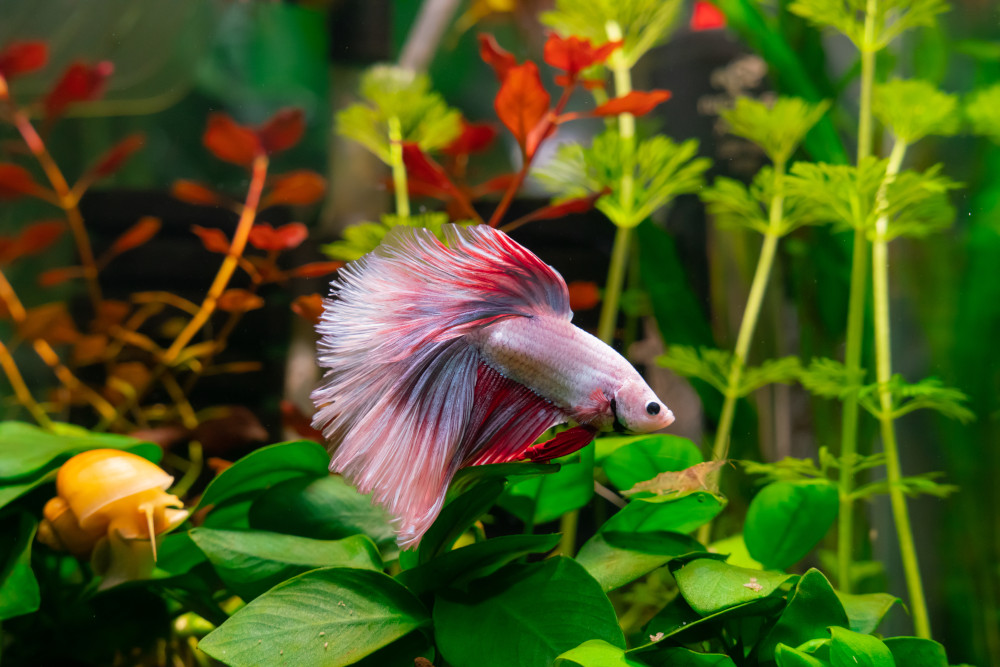Betta fish are fascinating and beautiful creatures that have captured the interest of hobbyists around the world. Their vibrant colors and flowing fins make them incredibly popular as pets. However, many betta fish enthusiasts wonder if it’s possible for these fish to live together in harmony. In this article, we will explore the subject of betta fish coexistence, examining the nature of betta fish, the factors influencing their ability to live together, and providing tips for successful betta fish cohabitation.

Understanding the Nature of Betta Fish
To comprehend whether betta fish can live together, it’s essential to gain an understanding of their nature. Bettas, also known as Siamese fighting fish, are known for their territorial and aggressive behavior, especially males.
These fish have evolved to be solitary and fiercely protect their territories from other males. However, female betta fish have a different social dynamic and can coexist peacefully under the right conditions.

Overview of Betta Fish
Betta fish (Betta splendens) originate from Southeast Asia and are naturally found in rice paddies, shallow ponds, and slow-moving streams. They are labyrinth fish, known for their ability to breathe atmospheric oxygen by gulping air at the water’s surface. This unique adaptation allows them to survive in oxygen-deprived environments.
Physical Characteristics of Betta Fish
Betta fish possess distinct physical characteristics that set them apart from other species. They have long, flowing fins that come in a variety of colors and patterns. The males, in particular, have vibrant hues and elaborate fin displays, which they use to attract females and intimidate rivals.
Behavioral Patterns of Betta Fish
Male betta fish are known for their aggressive behavior, especially towards other males. They will engage in fierce territorial battles, flaring their fins and displaying their vibrant colors as a warning. Female betta fish, on the other hand, have a more social nature and can live together peacefully in the right conditions.

Factors Influencing Betta Fish Coexistence
Several factors can influence the ability of betta fish to live together. It’s important to consider these factors when deciding whether to keep multiple bettas in the same tank.
Betta Fish Aggression
Male betta fish, often called Siamese fighting fish, are famous for their aggression towards each other. So, sharing fish tanks seems unlikely. However, things change when it comes to reproduction. Male bettas create elaborate bubble nest to attract females and protect their eggs.
For a short time, a male-female betta pair can live together. Fish owners need to remove the female promptly once eggs are laid to prevent conflict. While successful mating is possible, it’s definitely not a setup for a peaceful, long-term community tank.
The primary hurdle to betta fish coexistence is their natural aggression. Male bettas, in particular, are notorious for their territorial behavior and will actively fight with other males. Keeping multiple males together is not recommended and can result in serious harm or even death.

Tank Size and Setup
The size and setup of the tank play a crucial role in betta fish cohabitation. Providing ample space and hiding spots for each fish is essential. A larger tank allows for more territory, reducing the likelihood of aggressive encounters.
Gender Considerations
While male bettas are solitary creatures, female bettas can sometimes thrive in a unique setup known as a betta sorority. A sorority requires a larger tank and careful monitoring by fish owners, but it can be fascinating to observe. Ideally, at least five or six females should be introduced together for the hierarchy to form properly.
Providing hiding places and enriching their diet with treats like brine shrimp can help keep tempers in check. Remember, sororities aren’t always successful, and individual personalities play a major factor in female bettas living together harmoniously.
Female bettas, on the other hand, have a higher chance of living together peacefully. When kept in a group, female betta fish form what is known as a “sorority.” It’s recommended to keep a group of 4-6 female bettas together, providing they have enough space and suitable tank conditions.

Compatibility with Other Fish Species
While betta fish can coexist with members of their own species under certain circumstances, it’s important to choose compatible tank mates. Some peaceful community fish, such as certain tetras or catfish, can be successfully housed with bettas. However, aggressive or fin-nipping species should be avoided, as they can trigger fights and stress for the bettas.
Given the inherent aggression of betta fish, it’s important to approach the idea of cohabitation with caution. While female bettas can live together comfortably in a well-suited tank, keeping multiple male bettas is not recommended due to their territorial nature and potential for aggression. Therefore, the answer to the question “Can betta fish live together?” is a nuanced one.
Exploring the Possibility of Betta Fish Coexistence
If you wish to keep multiple bettas together, considering a sorority of female bettas may be a viable option. When introduced properly and provided with the right environment, female bettas are more likely to coexist peacefully. It’s crucial to monitor their behavior closely and be prepared to intervene if any signs of aggression arise.

Pros and Cons of Keeping Multiple Betta Fish
There are both advantages and disadvantages to keeping multiple betta fish in the same tank. On the positive side, seeing a sorority of female bettas peacefully swimming together can be visually stunning and fascinating to observe. However, it’s important to note that maintaining ideal conditions and monitoring their behavior requires additional effort and attention compared to keeping a single betta fish.
Creating a Suitable Environment for Multiple Betta Fish
If you decide to create a tank for multiple betta fish, it’s essential to create a suitable environment that caters to their specific needs.
Selecting the Right Tank
Choosing an appropriately sized tank is crucial for betta fish cohabitation. Provide a minimum of 10 gallons for a sorority tank, allowing enough space for each fish to establish its territory and swim freely.
Providing Adequate Hiding Spots
Adding plenty of hiding spots, such as plants, caves, or driftwood, helps create separate territories and reduces stress. This is particularly important in a sorority tank to prevent constant interactions between the fish.
Maintaining Water Quality and Conditions
Regular water changes and monitoring of water parameters are vital for the health and well-being of betta fish. Implement a proper filtration system and ensure the water is kept clean and well-oxygenated.
Tips for Successful Betta Fish Coexistence
To maximize the chances of successful betta fish cohabitation, consider the following tips:
Introduction Techniques for New Betta Fish
When introducing new bettas to an existing tank, it’s important to utilize proper acclimation methods and ensure all fish have enough space to establish their territories.
Monitoring Behavior and Identifying Signs of Aggression
Regularly observe the behavior of your bettas to spot any signs of aggression or stress. These can include fin nipping, chasing, or frequent flare-ups. Immediate action should be taken if aggression escalates.
Addressing Potential Issues and Overcoming Challenges
If aggression arises between bettas, separating them temporarily, rearranging the tank, or adding additional hiding spots may help diffuse tensions. Seek advice from experienced fishkeepers if needed.

Conclusion
While betta fish coexistence is possible under certain circumstances, it is important to consider the nature and behavior of these fascinating creatures. Female bettas can live together comfortably in a well-suited tank, while male bettas are better off being kept individually.
Creating a suitable environment and diligently monitoring their behavior are key to successful betta fish cohabitation. By following the tips provided, you can ensure a harmonious and thriving community of betta fish in your tank.


